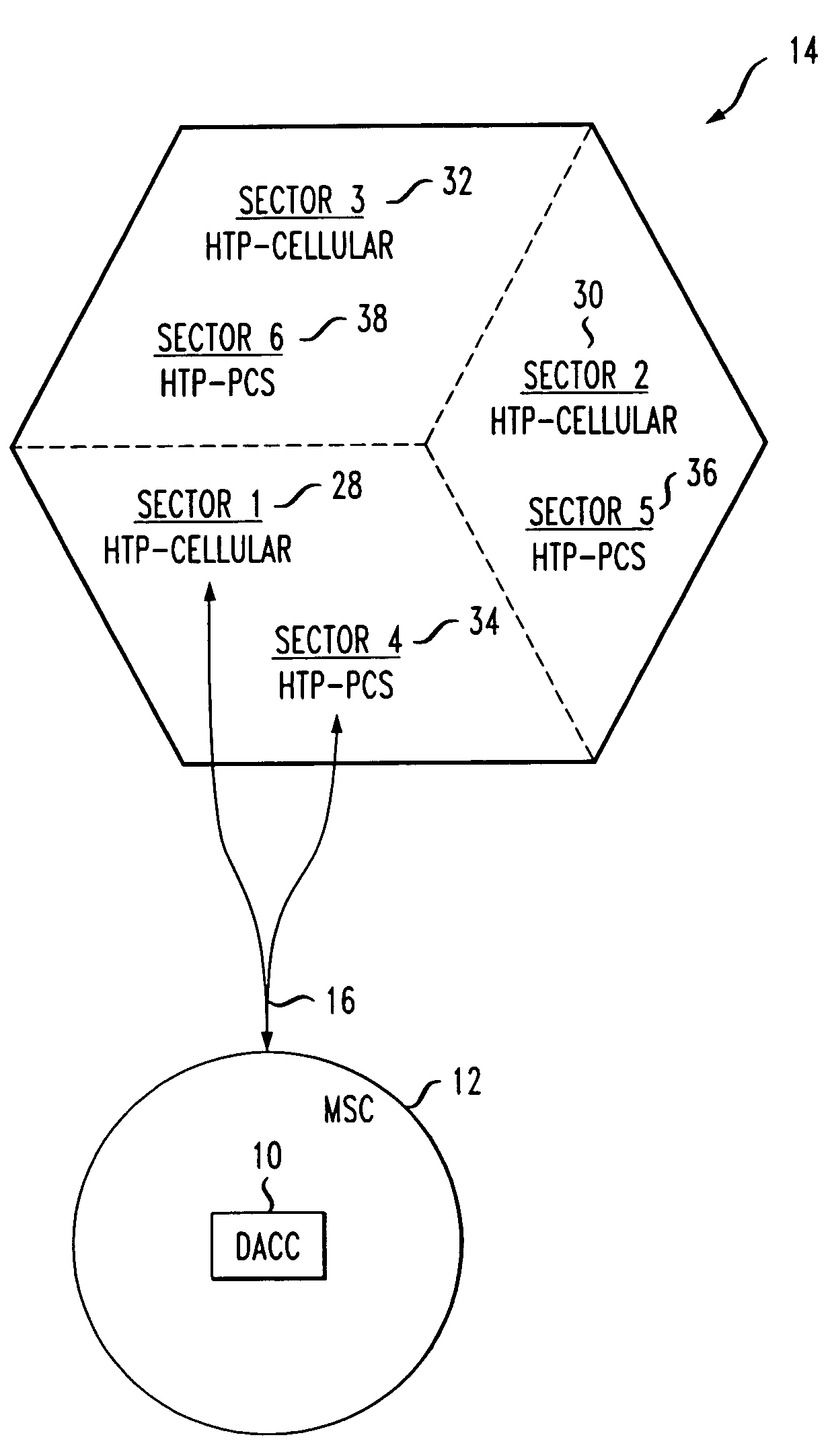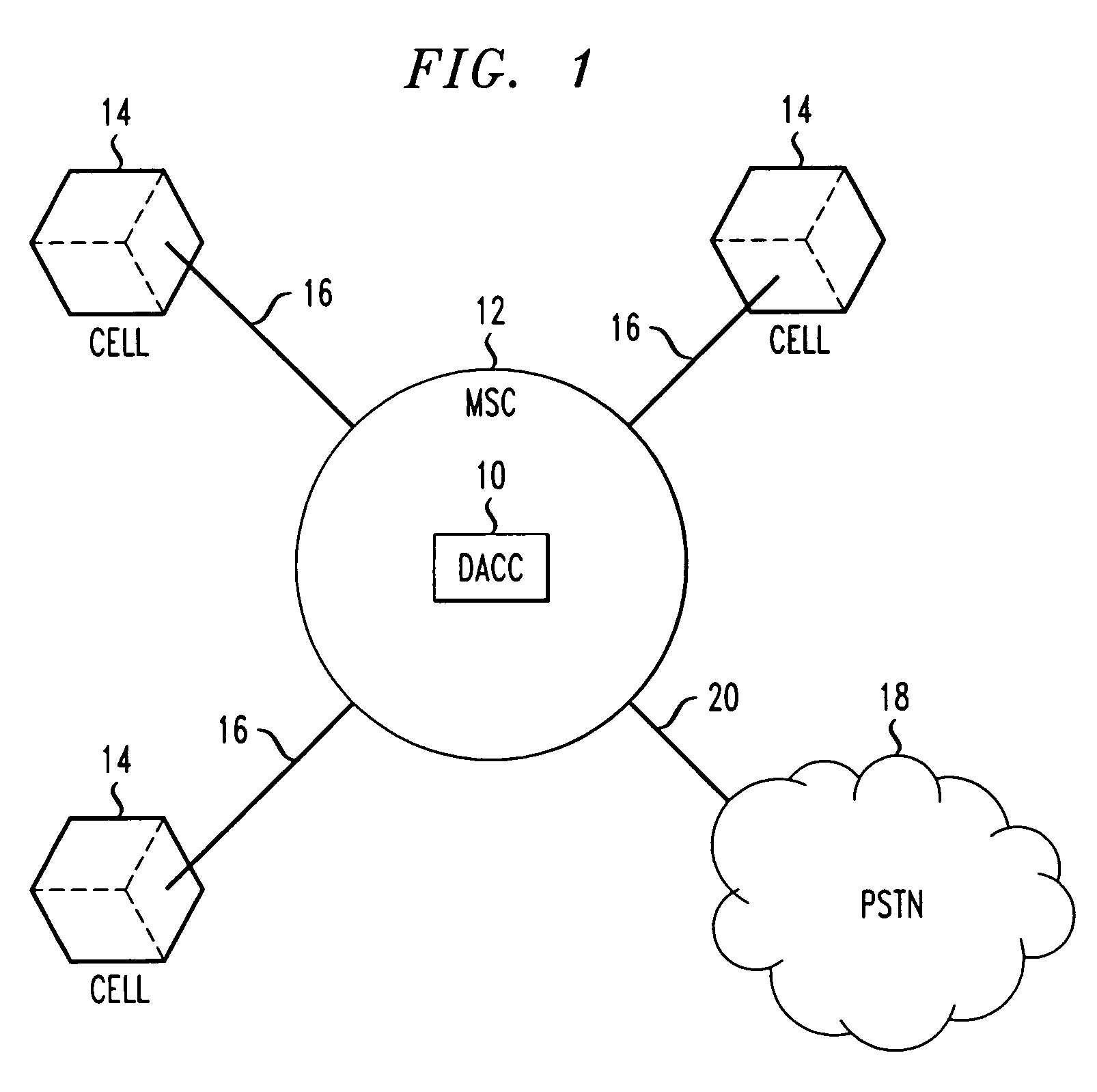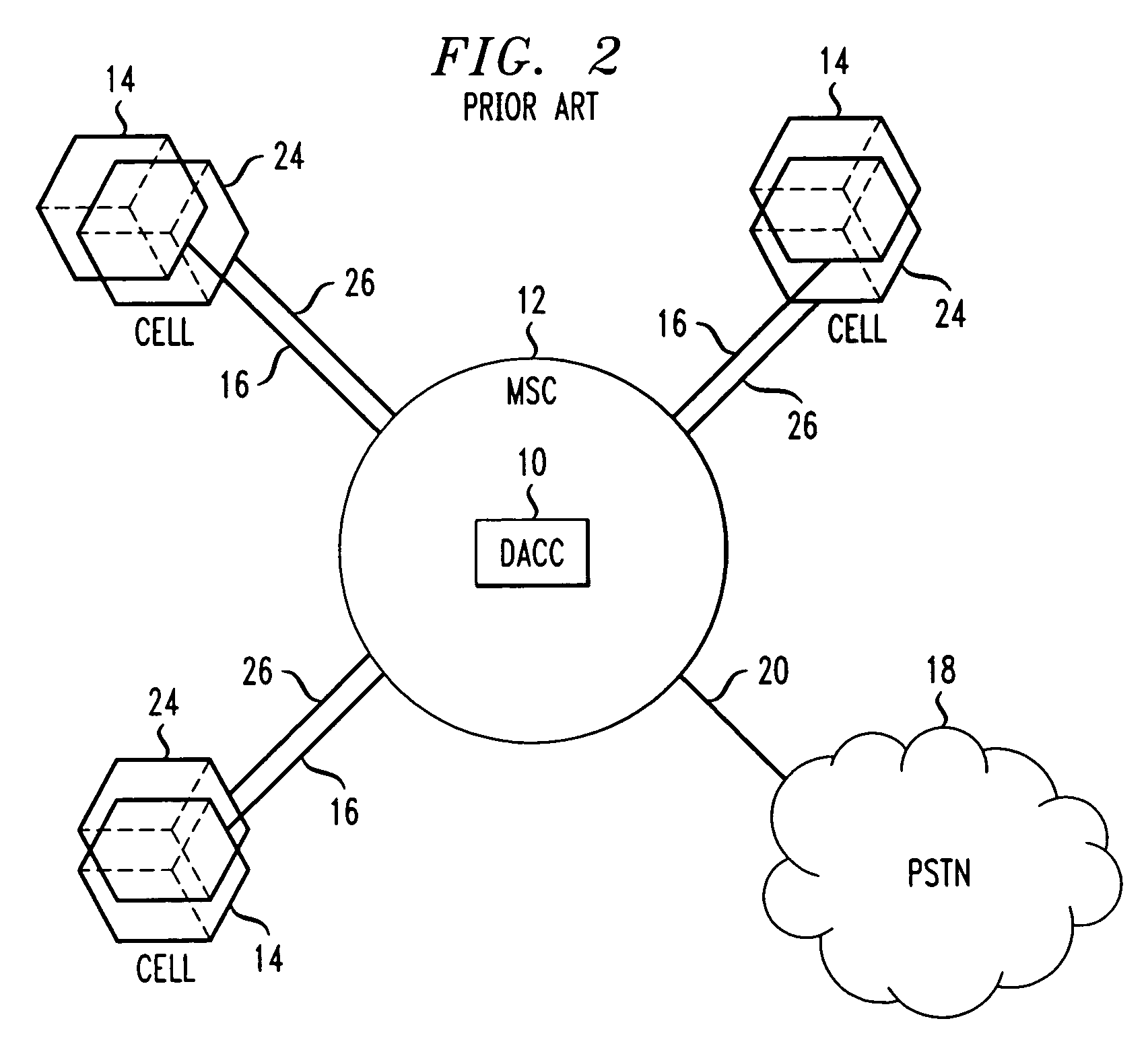Wireless base station supporting multiple hyperbands
- Summary
- Abstract
- Description
- Claims
- Application Information
AI Technical Summary
Benefits of technology
Problems solved by technology
Method used
Image
Examples
Embodiment Construction
[0018]Existing systems define a cell as a collection of RF transmission patterns called sectors (or antenna faces) that share common properties. However, many transmission characteristics vary across the sectors of a cell. Most transmission-effecting parameters are administered at the sector level. Different hyperbands require different transmission characteristics very similar to the differences in characteristics between sectors. From a software perspective, it may be deemed advantageous to view separate hyperbands sharing the same RF transmission pattern as independent sectors. This view provides each hyperband with the necessary data structures to support its unique transmission characteristics.
[0019]FIG. 1 illustrates in an abstracted form, providing sufficient detail for the purpose of explaining the present invention, the organization of a cellular network. A Data Administration Call Control (DACC) system 10 is within a Mobile Switching Center 12 in order to control the opera...
PUM
 Login to View More
Login to View More Abstract
Description
Claims
Application Information
 Login to View More
Login to View More - R&D
- Intellectual Property
- Life Sciences
- Materials
- Tech Scout
- Unparalleled Data Quality
- Higher Quality Content
- 60% Fewer Hallucinations
Browse by: Latest US Patents, China's latest patents, Technical Efficacy Thesaurus, Application Domain, Technology Topic, Popular Technical Reports.
© 2025 PatSnap. All rights reserved.Legal|Privacy policy|Modern Slavery Act Transparency Statement|Sitemap|About US| Contact US: help@patsnap.com



